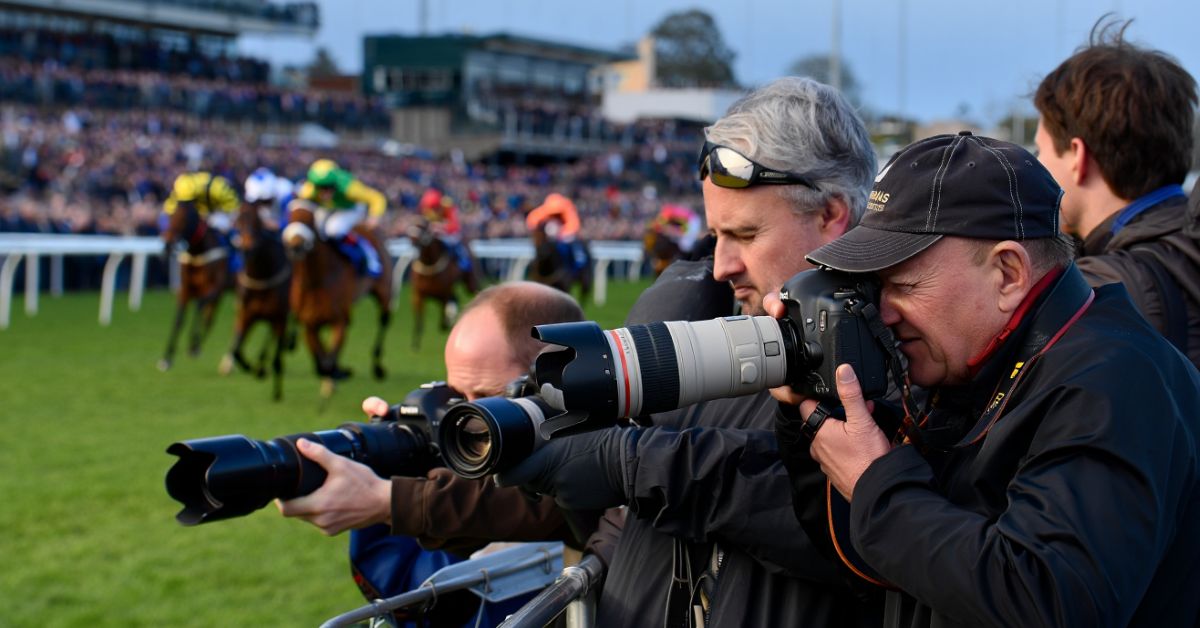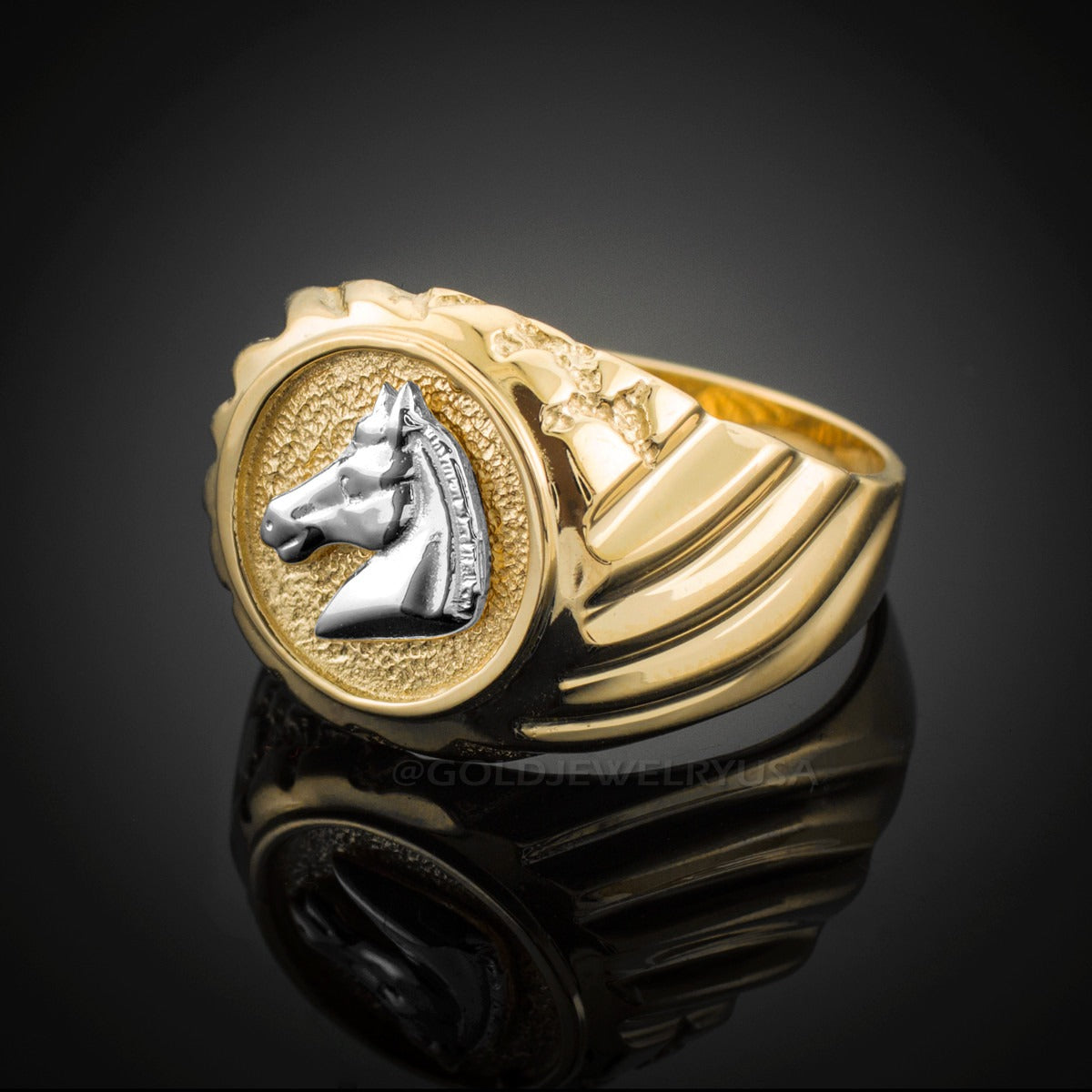
What Is Horse Race Journalism? Understanding Media Coverage of Political Campaigns
Horse race journalism is a style of political reporting that treats elections like competitive sporting events, focusing primarily on who's winning and losing rather than substantive policy discussions. Just as spectators at a racetrack obsess over which horse is leading, media coverage of politics through this lens emphasizes polling numbers, candidate standings, and campaign strategy over the issues that actually affect voters' lives. This approach to electoral coverage has dominated American political journalism since the 1970s, fundamentally shaping how we understand campaigns and democracy itself.
The term "horse race journalism" comes from the obvious parallel: reporters cover political campaigns the way sports journalists cover races, with constant updates on who's ahead coverage, momentum shifts, and frontrunner status. Instead of deep dives into healthcare policy or economic plans, we get breathless updates about which candidate gained two points in Iowa. This campaign journalism style has serious consequences for our democracy, influencing everything from voter engagement to the quality of political discourse. Understanding what horse race journalism truly means helps us become more critical consumers of election reporting and demand better from our news sources.
The Origins and Definition of Horse Race Journalism
Horse race journalism emerged as the dominant form of electoral coverage during the 1972 presidential campaign, though its roots stretch back further. The term itself perfectly captures how media coverage of politics transformed elections into spectator sports, complete with winners, losers, and dramatic plot twists that keep audiences engaged.
At its core, journalism definitions describe horse race journalism as reporting that emphasizes the competitive aspects of political campaigns rather than substantive policy matters. Think of it this way: instead of explaining what a candidate's healthcare plan would mean for your family, horse race journalism tells you whether that candidate is up or down three points in the latest poll. It's the difference between understanding the race and understanding what's at stake.
The Evolution of Campaign Reporting
The shift toward horse race journalism wasn't accidental. In 1972, Timothy Crouse's landmark book "The Boys on the Bus" documented how campaign reporters developed a pack mentality, all chasing the same political narratives about momentum and viability. As polling technology improved throughout the 1970s and 1980s, focus on polling became increasingly central to campaign journalism. Why? Because polls provide easy, quantifiable content that fills 24-hour news cycles and generates compelling headlines.
By the 1988 presidential race, horse race journalism had become so prevalent that scholars began documenting its effects. Research from that era showed that electoral coverage focused overwhelmingly on campaign strategy, polling numbers, and candidate viability rather than voter issues. A study by Patterson in 1993 found that strategy coverage had increased from 45% of election stories in 1960 to over 80% by 1992. These numbers tell a troubling story about the erosion of political discourse in American democracy.
The digital age only accelerated this trend. With social media and online news creating constant demand for fresh content, media coverage of politics became even more focused on the horse race. Real-time polling, fundraising trackers, and predictive models turned election reporting into something resembling fantasy sports for political junkies.
How Horse Race Journalism Actually Works in Practice
Understanding horse race journalism requires looking at what actually appears in your news feed during campaign season. The mechanics reveal why this approach to campaign journalism has become so dominant despite widespread criticism.
The Daily Campaign Coverage Cycle
Every morning during election season, political reporters wake up to a familiar routine. They check overnight polling numbers, scan campaign fundraising reports, and analyze any shifts in candidate standings. Their job isn't primarily to explain policy positions or investigate candidates' records—it's to update the scoreboard and explain who gained or lost ground overnight.
Consider a typical electoral coverage day during primary season. A new poll drops showing Candidate A jumped from 23% to 28% support. Within hours, dozens of articles appear analyzing this shift. Did it result from last week's debate performance? Was it the new campaign ad highlighting their frontrunner status? Reporters engage in political handicapping, treating voters like betting odds at a track. Meanwhile, Candidate A's detailed education reform proposal announced the same day receives minimal attention because it doesn't fit the horse race frame.
This media coverage of politics creates a self-reinforcing cycle. Candidates who poll well receive more media attention on politics, which helps them raise more money and gain momentum in campaigns. This increased visibility often leads to better polling, continuing the cycle. Conversely, candidates deemed "not viable" by early horse race metrics struggle to break through, regardless of their ideas' merit.
The Language and Framing of Competition
Horse race journalism employs specific language borrowed from sports and gambling. Reporters discuss candidates "surging ahead," "falling behind," or "gaining momentum." They identify frontrunner status and create underdog narratives that make campaigns feel like Hollywood scripts. Terms like "game-changer," "knockout blow," and "Hail Mary pass" pepper political reporting, transforming complex policy debates into simplified sporting metaphors.
The gamification of politics extends beyond mere language. News organizations create elaborate graphics showing candidates' paths to victory, complete with probability percentages and interactive maps. These visualizations, while engaging, reduce democracy to a game where the only question that matters is who wins, not what they'll do with power. It's entertainment masquerading as news analysis, and it shapes how millions understand political campaigns.
The Role of Punditry and Speculation
Punditry forms the backbone of modern horse race journalism. Cable news panels dissect every campaign move through the lens of electoral strategy rather than governance. When a candidate proposes raising the minimum wage, pundits don't primarily discuss whether it's good policy—they debate whether it will help in Ohio swing districts.
This constant political handicapping creates bizarre situations where reporters spend more time predicting election outcomes than investigating what candidates have actually done or plan to do. As political scientist Thomas Patterson noted in 2016: "In covering the horse race, the press often substitutes a focus on what will happen for a focus on what ought to happen."
The Problems and Criticism of Political Reporting Through the Horse Race Lens
The criticism of political reporting that emphasizes competition over substance has grown louder over recent decades, and for good reason. Horse race journalism creates serious problems for democratic governance, voter engagement, and the quality of political discourse.
Shallow Coverage and the Substance vs. Spectacle Debate
The most fundamental critique of horse race journalism centers on shallow coverage that prioritizes spectacle over substance. When media coverage of politics focuses on polling numbers and campaign strategy, it necessarily crowds out deeper reporting on voter issues and policy debate. There are only so many minutes in a newscast and only so many column inches in a newspaper.
Research consistently shows this substance vs. spectacle imbalance. A Harvard Kennedy School study analyzing 2016 electoral coverage found that policy issues accounted for just 10% of campaign news stories, while horse race coverage dominated at 42% of total coverage. Think about what that means: election reporting gave four times more attention to who was winning than to what was at stake for voters' daily lives.
This shallow coverage has real consequences. Voters who rely primarily on mainstream news during campaigns end up knowing more about candidate standings and campaign fundraising numbers than about healthcare proposals, tax plans, or foreign policy positions. The erosion of political discourse isn't just abstract—it means millions of Americans make voting decisions based on incomplete or superficial information.
The issue-based reporting that does appear often gets framed through the horse race lens anyway. A candidate's climate change plan becomes a story about whether it will help them win environmentalist votes, not whether it would effectively address the crisis. Every policy proposal gets filtered through the question "Will this help them win?" rather than "Is this good for the country?"
Media Effects on Elections and Democratic Participation
Horse race journalism doesn't just reflect campaigns—it actively shapes them. The media effects on elections run deep, influencing everything from candidate behavior to voter turnout to the health of democracy itself.
When journalists constantly discuss candidate viability based on early polling and fundraising, they create self-fulfilling prophecies. Candidates labeled as "long shots" struggle to attract donors and volunteers, not necessarily because their ideas lack merit, but because media coverage of politics has declared them unviable. This reporting on electability often becomes more influential than voters' actual preferences, narrowing the field before most Americans pay attention.
The focus on momentum in campaigns and frontrunner status also affects voter behavior directly. Research shows that undecided voters often gravitate toward candidates portrayed as winning, creating bandwagon effects. Conversely, supporters of candidates shown as losing sometimes become discouraged and disengage entirely. This election reporting bias toward covering the race rather than the stakes contributes to voter cynicism and declining participation.
Perhaps most troubling, horse race journalism reinforces the idea that politics is a game played by elites rather than a process through which citizens shape their collective future. When electoral coverage treats campaigns like entertainment rather than consequential decisions about governance, it's hardly surprising that many Americans tune out. The consequences of horse race reporting include lower civic engagement and weaker democratic institutions.
Journalistic Ethics and Professional Responsibility
The persistence of horse race journalism despite decades of criticism raises important questions about journalistic ethics and media scrutiny. Many reporters acknowledge the problems with horse race framing yet continue producing such coverage. Why?
Part of the answer lies in institutional pressures. Horse race stories are relatively easy to produce—polls provide ready-made news pegs, and speculative analysis requires less investigative work than deep policy reporting. They also generate clicks and ratings because competition naturally draws attention. For news organizations struggling financially, horse race journalism offers an efficient way to fill airtime and pages while keeping audiences engaged.
However, this doesn't absolve journalists of responsibility. As veteran political reporter Dan Balz acknowledged in 2015: "We in the media have to accept some responsibility for the fact that people feel like the system is rigged, because we've spent so much time covering politics as a game."
The principles of public interest journalism demand better. Reporters covering campaigns have a responsibility to inform citizens, not merely entertain them. Journalistic ethics require balancing audience interest with democratic necessity. While horse race elements may be inevitable in campaign journalism, they shouldn't overwhelm substantive coverage of voter issues and policy debate.
Better Alternatives: Civic Journalism and Issue-Based Reporting
Recognizing the problems with horse race journalism has led to calls for alternative approaches to campaign journalism. While competitive elements may always be part of electoral coverage, other frameworks can better serve democracy and voters.
The Promise of Civic Journalism
Civic journalism, also called public journalism, emerged in the 1990s as a direct response to horse race journalism's dominance. This approach treats journalism as a democratic practice that should help citizens participate meaningfully in public life, not just observe politics as spectators.
In civic journalism, reporters work backward from what citizens need to know to make informed decisions, rather than forward from what campaigns want to discuss or what makes compelling drama. This means extensive coverage of voter issues identified through community engagement, not just topics that fit horse race narratives or generate political narratives about momentum.
The Virginian-Pilot newspaper pioneered this approach during the 1992 elections, surveying readers about their concerns and then demanding candidates address those specific issues. Rather than covering campaign events passively, reporters actively facilitated policy debate on topics voters identified as priorities. The result was electoral coverage that served citizens rather than treating them as an audience for political theater.
Civic journalism also emphasizes solutions-oriented reporting. Instead of just identifying problems or covering political fights about them, this approach investigates potential solutions and evaluates candidates' proposals against evidence about what works. It transforms campaign journalism from a spectator sport into a practical guide for democratic decision-making.
While civic journalism faced criticism and has waxed and waned in prominence, its core insight remains vital: media coverage of politics should primarily serve the democratic needs of citizens, not the entertainment preferences of audiences or the narrative convenience of newsrooms.
Issue-Based Reporting as a Framework
Issue-based reporting offers another alternative to horse race journalism's dominance. This approach organizes electoral coverage around substantive topics—healthcare, education, climate, economy—rather than around the competitive dynamics of campaigns.
In issue-based reporting, a story about healthcare during campaigns would thoroughly examine candidates' proposals, compare them to current policy and evidence about what works, and explain real-world implications for different groups of voters. Polling numbers might appear, but only as one data point among many, not as the story's organizing principle.
Several news organizations have experimented with dedicated issue-based reporting during recent election cycles. ProPublica's "Electionland" project focused on voting access and election integrity. NPR developed "Campaign Reporters' Take" segments specifically analyzing policy proposals in detail. These efforts demonstrate that substantive campaign journalism can engage audiences while better serving democracy.
The key is balance. Few suggest eliminating all competitive coverage—knowing who's likely to win helps voters understand political reality. But when who's ahead coverage overwhelms everything else, election reporting fails its democratic function. The question isn't whether to include horse race elements, but whether they should dominate media coverage of politics to the extent they currently do.
What Readers Can Do
Understanding horse race journalism empowers you to demand better political reporting and become a more informed citizen. Here are practical steps:
-
Seek out sources that prioritize policy over polls. Publications like ProPublica, The Marshall Project, and issue-specific outlets often provide deeper news analysis than mainstream sources.
-
When reading campaign coverage, ask yourself: "What would I need to know to govern?" If the article doesn't help answer that question, you're probably reading horse race content.
-
Support journalism that explains consequences. When media organizations produce substantive issue-based reporting, reward them with subscriptions, shares, and feedback.
-
Be skeptical of early predictions. Reporting on electability months before elections often proves wildly inaccurate and is based more on pundit speculation than actual voter sentiment.
-
Demand comprehensive candidate information. News organizations respond to audience demands. When viewers and readers consistently request policy analysis over political handicapping, coverage shifts accordingly.
Frequently Asked Questions on Horse Race Journalism
What exactly is horse race journalism and why is it called that?
Horse race journalism refers to political reporting that treats elections like competitive races, emphasizing which candidates are ahead or behind rather than their policy positions or qualifications. The name comes from the obvious parallel to covering an actual horse race—the focus is on who's winning, who's gaining ground, and who's falling behind, just as it would be at a racetrack. This campaign journalism style became dominant in the 1970s and has shaped electoral coverage ever since, turning complex political decisions into simplified narratives about competition and momentum.
How does horse race journalism differ from traditional political reporting?
Traditional political reporting focused more on candidates' backgrounds, policy proposals, and governing records. Horse race journalism, by contrast, emphasizes polling numbers, campaign strategy, campaign fundraising totals, and competitive dynamics. While older political journalism asked "What would this candidate do in office?" modern horse race journalism primarily asks "Can this candidate win?" This shift represents a fundamental change in how media coverage of politics serves (or fails to serve) democratic deliberation. The substance vs. spectacle debate captures this difference—traditional reporting prioritized substance while horse race journalism often chooses spectacle.
Does horse race journalism actually affect election outcomes?
Yes, research confirms that horse race journalism has significant media effects on elections. When reporters constantly emphasize candidate viability and frontrunner status, it influences fundraising, volunteer recruitment, and voter perceptions. Candidates labeled as "long shots" struggle to gain traction regardless of their ideas' merit, while those portrayed as frontrunners receive more media attention on politics, creating self-fulfilling prophecies. Studies also show that focus on polling and momentum coverage can create bandwagon effects among undecided voters. The consequences of horse race reporting extend beyond individual races to affect democratic participation and citizen engagement overall.
Why do journalists continue using the horse race approach if it's criticized?
Horse race journalism persists despite criticism for several practical reasons. Polls provide easy, quantifiable content that fills 24-hour news cycles. Competitive narratives naturally engage audiences, generating clicks and ratings. Speculative analysis requires less investigative resources than deep policy reporting, making it efficient for financially struggling news organizations. Additionally, institutional momentum and professional culture perpetuate these patterns—many reporters learned campaign journalism in this framework. However, awareness of these pressures doesn't eliminate journalists' ethical responsibility to prioritize public interest journalism over convenient or entertaining coverage.
What can voters do to get better political coverage?
Voters can demand better electoral coverage by supporting news organizations that prioritize issue-based reporting over horse race journalism. Subscribe to outlets producing substantive policy debate coverage, share their work, and provide positive feedback. When consuming campaign news, actively seek information about voter issues and candidates' governing records rather than just polling numbers and strategy. Contact news organizations requesting more analysis of policy proposals and less political handicapping. By rewarding quality journalism with attention and resources while questioning shallow coverage, audiences can gradually shift media coverage of politics toward approaches that better serve democracy.






















